






Scientists have discovered a natural way to kill germs fast.
Now thousands of people are using it against viruses and bacteria that cause illness.

Colds and many other illnesses start when viruses get in your nose and multiply. If you don’t stop them early, they spread and cause misery.
Hundreds of studies confirm copper kills viruses and bacteria almost instantly just by touch.
That’s why ancient Greeks and Egyptians used copper to purify water and heal wounds. They didn’t know about viruses and bacteria, but now we do.
“The antimicrobial activity of copper is well established.” National Institutes of Health.
Scientists say copper’s high conductance disrupts the electrical balance in a microbe cell and destroys it in seconds.
The EPA recommended hospitals use copper for touch surfaces like faucets and doorknobs. This cut the spread of MRSA and other illnesses by over half, and saved lives.
The strong scientific evidence gave inventor Doug Cornell an idea. He made a smooth copper probe
with a tip to fit in the bottom of the nostril, where viruses collect.
When he felt a tickle in his nose like a cold about to start, he rubbed the copper gently in his nose for 60 seconds.
“It worked!” he exclaimed. “The cold never happened. I used to get 2-3 bad colds every year. Now I use my device whenever I feel a sign I am about to get sick.”
He hasn’t had a cold in 10 years.
Users say:
“It works! I love it!”
“I can’t believe how good my nose feels.”
“Is it supposed to work that fast?” “One of the best presents ever.” “Sixteen flights, not a sniffle!”
“Cold sores gone!”
“It saved me last holidays. The kids all got sick, but not me.”
“I am shocked! My sinus cleared, no more headache, no more congestion.”
“Best sleep I’ve had in years!”
After his first success with it, he asked relatives and friends to try it. They all said it worked, so he patented CopperZap® and put it on the market.
Soon hundreds of people had tried it. 99% said copper worked if they used it right away at the first sign of germs, like a tickle in the nose or a scratchy throat.
Longtime users say they haven’t been sick in years. They have less stress, less medical costs, and more time to enjoy life.
Soon people found other things they could use it against.
ColdsFlu
Virus variants
Sinus trouble
Cold sores
Fever blisters
Canker sores
Strep throat
Night stuffiness
Morning congestion
Nasal drip
Infected sores
Infected wounds Styes Warts Ringworm Other microbial threats
The handle is curved and textured to increase contact. Copper can kill germs picked up on fingers and hands after you touch things other people have touched.
The EPA says copper works just as well when tarnished.
Dr. Bill Keevil led one of the science teams. He placed millions of viruses on a copper surface. “They started to die literally as soon as they touched it.”
CopperZap® is made in the USA of pure copper. It has a 90-day full money back guarantee. Price $79.95. Get $10 off each CopperZap with code NATA34.
Go to www.CopperZap.com or call toll-free 1-888-411-6114. Buy once, use forever.
Statements are not intended as product health claims and have not been evaluated by the FDA. Not claimed to diagnose, treat, cure, or prevent any disease.













CALENDAR

Calendar events are online only, and can be submitted at NaturalAZ.com/calendar
NATIONAL MARKETS
Advertise your products or services in multiple markets! Natural Awakenings Publishing Corp. is a growing franchised family of locally owned magazines serving communities since 1994. To place your ad in other markets call 239-206-2000. For franchising opportunities call 239-206-2000 or email NaturalAwakenings@KnoWEwell.com.

Tracy Patterson, BSc, MES
DESIGN & PRODUCTION
Vegetorium, LLC
COPY EDITORSara Gurgen
DIGITAL PLATFORMS
Hass Solutions Locable
Natural Awakenings – Phoenix 17470 N Pacesetter Way Scottsdale, AZ 85255
Tracy@NaturalAZ.com NaturalAZ.com


CEO Kimberly B. Whittle
COO/Franchise Sales Joe Dunne Asst. Director of Ops Heather Gibbs

Layout Designer Gabrielle W-Perillo Financial Manager Yolanda Shebert Digital Content Director Rachael Oppy National Advertising Lisa Doyle-Mitchell
CONTACT US
P.O. Box 154
Far Hills, NJ 07934
Ph: 239.206.2000

NaturalAwakenings@KnoWEwell.com
© 2023 by Natural Awakenings. All rights reserved. Although some parts of this publication may be reproduced and reprinted, we require that prior permission be obtained in writing.
Natural Awakenings is a free publication distributed locally and is supported by our advertisers. Please contact us to find a location near you.
We do not necessarily endorse the views expressed in the articles and advertisements, nor are we responsible for the products and services advertised. Check with a healthcare professional regarding the appropriate use of any treatment.
nd another year passes... Try as I might to slow down time, it’s as if I can see the hands spinning around the clock, and the older I get the faster they spin!
One thing I’ve noticed is that when I attempt to multitask, or if I have a lot on my mind, time speeds up. It reminds me of the old days on those merry-go-rounds (also called playground spinners, roundabouts or carousels), where we’d get it going so fast that we couldn’t hang on any longer, and we’d go whipping off the ride and land in a crumple many feet away. At the end of some days, I feel like that kid who just got flung off the merry-go-round.
I believe that the multitasking mentality was almost an expectation back when I was a young adult. We were taught that being productive meant being efficient at doing like 10 things at once. However, recent studies show that this simply isn’t true.
In fact, my tendency to try and multitask has, from time to time, led me to suffer the consequences outlined in a study by David Meyer, a professor at the University of Michigan and director of the school's Brain, Cognition and Action Laboratory. According to his study, multitasking impacts short-term memory; leads to increased anxiety; inhibits creative thinking; stops one from getting into a state of flow; and causes more mistakes and less productivity. I was just complaining recently that I couldn’t get into a creative headspace, or “the flow.”
According to the article “Multicosts of Multitasking,” by Kevin P. Madore, Ph.D., and Anthony D. Wagner, Ph.D., what we’re really doing when we’re multitasking is bouncing back and forth between tasks, not actually “multitasking,” due to the simple fact that our brains are not designed to do multiple things at once. And to add to this, Meyer states even brief mental blocks created by shifting between tasks can cost as much as 40 percent of someone's productive time—the very opposite result that we’re striving for!
To circle back to my original thoughts on slowing down time, I’ve found that if I concentrate on doing one thing at a time, not only am I more productive, my day seems to decelerate to a manageable pace—big bonus!
There’s so much more to this; more than I can summarize in my letter, but suffice is to say, I will be doing more research and learning how to single task effectively on a regular basis in order to make it a habit and enjoy the side benefit of slowing down my day.
Please note that all deadlines (advertising and editorial) are the 10th of the month prior to the edition being published. For example, January 10 is the deadline for all February edition submissions.


Older adults that consistently get up early and stay active throughout the day are happier and perform better on cognitive tests than those with irregular activity patterns, according to a new study led by researchers at the University of Pittsburgh. The researchers studied 1,800 adults 65 or older and divided them into four subgroups of activity patterns: earlier rising/robust, shorter activity duration/less modellable, shorter active periods/very weak and later activity offset/very weak. Both groups with weak rhythms had twofold odds of clinically significant depression symptoms and cognitive performance deficits. As we age, disruption in activity patterns may be common. More research is needed into why earlier and robust patterns appear to be protective and whether modifying disrupted patterns improves health outcomes.

A few cups of black tea a day might help to avoid an early death, a study published in Annals of Internal Medicine suggests. Among nearly half a million adults ranging from 40 to 69 years old, those that consumed two or more cups of tea a day saw a modest, but lower risk for all causes of mortality over a median follow-up of more than 11 years. Participants of the large cohort study, called UK Biobank, self-reported tea intake from 2006 to 2010, while researchers noted mortality from all causes, including cardiovascular disease, ischemic heart disease, stroke and respiratory disease. The researchers concluded that drinking more than two cups of tea per day can be part of a healthy diet.

According to a new study funded by the Welsh government, children that live with a parent that has depression are more likely to also develop depression and not achieve educational milestones. Information on children born in Wales from 1987 to 2018, as well as their parents, was used in the study.
The researchers found that living with a parent with depression is detrimental to a child’s outcome, but having a parent that has had a history of depression, even prior to the birth, increases the risk of depression and lowers the educational attainment of the child. The highest level of childhood depression risk was associated with exposure to a mother that had depression both before and after the birth of the child.
The risk of failing school exams was highest when the child was exposed to either a mother or father (or another stable male figure) with a history of depression, both before and after the child’s birth. These results suggest that exposure to a chronically depressed parent(s) is important in determining if the child will develop depression and have trouble with schoolwork.
Other findings included: having no father figure in the child’s life resulted in a higher risk of childhood depression and poorer results in school, and having a father with depression was associated with poorer results in school.
Depression is an issue that impacts the entire family, not just an individual. Taking a whole-family approach to addressing mental health will help ensure positive outcomes for both parents and children in the long term.


Have you ever had that strange gut instinct or cold shiver guiding you to rethink a choice? At the Dimensions of Heaven and Earth spiritual center, in Scottsdale, we encourage you to welcome intuition as an everyday part of your standard routine, yet how do you learn to access and develop it? Most of us have assembled a toolbox of tools for our DIY projects over the years; isn’t it time you assemble your intuitive toolbox as well? At Dimensions, we are committed to offering tools and training to help you find your methods for integrating your spiritual energy into your daily life.
Leveraging seven years of experience in New Jersey, Dimensions of Heaven and Earth has created a center of personal services and inspirational education to help guide you on your own personal journey, tailor-made to fit your interests. We offer private reiki energy cleansing sessions and psychic and medium readings for healing and insight, both on premises and remotely via Zoom or phone. Our guided meditations are a great way to introduce yourself to our center. Dimensions’ workshops cover everything from protecting your personal space from unwanted energies to cleansing the energies of your home and office. Our psychic development series is compelling, and our reiki attunement classes provide you certification as a reiki practitioner.

Dimensions also works with exceptional local vendors to stock spiritual tools and treasures to help you manage your energies and those of your home. Our beautiful gifts are designed to provide health, wellness and focus, and we give instruction on how to actually use them—from crystals and grids to pendulums, candles and sage to herbal teas, and medicinal honeys to intentional soaps and body butters. Even our wall art radiates intention!
Jeff Carpenter is the owner, reiki master teacher, and spirit rescue medium of the Dimensions of Heaven and Earth spiritual center, located at 11108 N. Frank Lloyd Wright Blvd., Ste. E16, in Scottsdale. For more information or to make an appointment, visit DimensionsOfHeavenAndEarth.com or call 732-832-1036. See ad, page 12.

Advertorial
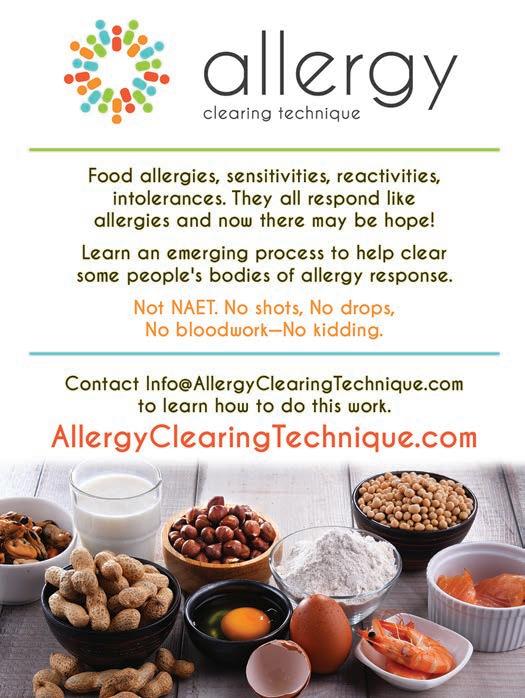


A new study led by researchers from the International Marine Litter Research Unit at the UK University of Plymouth suggests that while mechanical devices like Seabin do remove plastics and other items of marine litter, the quantities can be comparatively low and they may trap marine organisms. Scientists have been studying the issue of marine microplastics for more than 20 years.
The Seabin device continuously takes in water via a submersible pump that is then filtered, returning clean water to the area while leaving the litter in a catch bag. Hundreds around the world are said to have captured more that 2.5 million kilograms of litter from calm, sheltered environments like marinas, ports and yacht clubs.
The study found that the equivalent to 58 items a day were collected, mainly comprised of plastic pellets, polystyrene balls and plastic fragments. The Seabin also captured one marine organism for every 3.6 items of litter, or around 13 a day, including sand eels, brown shrimp and crabs. Around 60 percent were found dead.
During the study, five manual trawls were conducted at the same marina using nets from pontoons or vessels which collected an average of 19.3 grams of litter during cleaning periods of up to five minutes. The Seabin only captured the equivalent of 0.0059 grams in the same time. The researchers say that based on their findings, the device was of minimal benefit at this location.

In new research published in the Journal of Applied Ecology, Australian scientists amplified the natural sounds of the sea via underwater speakers, inducing baby oysters to swim toward desirable locations for regrowing oyster reefs. Thousands more larvae swam to those locations than to control areas to settle on bare rocks. Oyster reef restoration in Australia and globally is viewed as a way to re-establish healthy ecosystems. Shellfish filter and clean large volumes of water as they feed, and shell piles provide habitat for fish.
Many marine animals use sound to communicate over long distances, because it can carry more information than sight or smell underwater. Healthy reefs emit crackles and pops from shrimp and fish as they feed, and that makes oyster larvae aware of a healthy habitat for them to settle on a rock and begin growing their shell.
The researchers recorded sounds from the healthy Port Noarlunga Reef and played them underwater near two large reef restoration sites offshore from Adelaide and the Yorke Peninsula. They attracted up to 17,000 more oysters per square meter to these sites and close to four times more large oysters grew in the test areas over the next five months, further accelerating habitat growth.
Researchers calculate that devoting about 1 percent of U.S. farmland to agrivoltaics, the emerging practice of integrating solar installations with working farmland, would satisfy about 20 percent of present electricity demand. Agrivoltaics can reduce emissions, save water and possibly even boost crop yields.

miropa20/AdobeStock.com
A 2019 study from the University of Utah and Oregon State University found that the best places for solar installations tend to be the areas where we already grow food, because photovoltaic (PV) panels lose their efficiency at higher temperatures. By elevating the panels far enough above the ground, we can essentially harvest the sun twice, according to University of Arizona researcher Greg Barron-Gafford. Enough sunlight to grow crops gets past the panels, which act as a shield against extreme heat, drought and storms.
Solar panels reduce the amount of sunlight hitting the soil, “which means you have less evaporation of water,” says Barron-Gafford. He and his team were able to triple the yield of chiltepin peppers by growing them under PV panels on test plots versus unshaded control plots. Cherry tomato output doubled, and the soil on the PV plots retained 5 to 15 percent more moisture between waterings. “The plants aren’t just freeloading under the solar, they actually help the panels become more efficient,” he adds.
A $1 billion effort to electrify school buses will provide renewable fuel vehicles for around 400 school districts, including Indigenous tribal lands, Puerto Rico and American Samoa. At present, fewer than 1 percent of the country’s 500,000 school buses are electric or run on low-emission fuels. The government grant program wants to reduce children’s exposure to harmful exhaust from diesel buses as part of a broader effort to address climate change and environmental justice by making it easier for communities to have access to zero-emission vehicles. The funds come from $5 billion that the U.S. Environmental Protection Agency received to purchase around 2,300 electric buses. Many will be available to select school districts by the start of the next school year, with the rest by the end of this year.

A 2021 study found that even brief exposure to air pollution, including wildfire smoke and car exhaust, can alter a child’s DNA and increase their risk of heart and lung problems as adults. Seventy percent of students from low-income families take a bus to school, increasing their exposure to diesel exhaust. Children of color, in particular, are more likely to live near heavy transit routes, industrial facilities and other sources of vehicular and industrial pollution. This is in large part due to historic housing, zoning and transit policies that leave Black and Brown communities with few options.
Earthquakes usually strike without warning, leaving people no advance notice to take cover. When a temblor occurs, it sends seismic P waves through the ground that a Google app called MyShake can detect with a network of 1,300 U.S. Geological Survey sensors.

All smartphones have accelerometers that can pick up earthquake signals. When triggered, the phone sends a message to a detection server with location data to piece together where the earthquake is occurring. When four sensors are triggered simultaneously and the data meets the right criteria, the system determines that stronger S waves, which can cause damage and hurt people, may be imminent. The Federal Emergency Management Agency interprets that data and sends out alerts via the ShakeAlert system.
During a recent 4.8 magnitude Bay Area earthquake, more than 1 million Android users received messages seconds before the event. Robert de Groot, a member of the ShakeAlert team, says, “One of the things we’re trying to do is build an earthquake early warning industry.” Equipping phones to pick up signals is a cheaper and quicker solution than planting larger sensors 10 feet underground in earthquake-prone areas.
Junk mail is wasteful. In our digital age, email and the internet have become the preferred modes of communication. When a shiny, multipage magazine or catalog arrives in the mail, we must view it as an unsustainable practice and take action to curb it.


According to Jean-Michel Cousteau’s Ocean Futures Society, “More than 100 million trees are destroyed each year for junk mail plus 28 billion gallons of water and enough energy to power more than 9 million cars! When we stop junk mail and catalogs, we keep trees in the forests doing what they do best—providing oxygen for us to breathe and absorbing CO2 to keep our planet cool and healthy.”
Junk mail also adds 1 billion pounds of waste to landfills each year. U.S. Postal Service Senior Director of Environmental Affairs and Corporate Sustainability Jennifer Beiro-Réveillé says, “We buy over $392 million worth of products containing recycled material every year and reduce waste by recycling 277,000 tons of material annually,” at more than 4,000 postal paper recycling stations around the country. But the post office cannot control what is being mailed.
Almost all magazines have an online edition, and companies likely prefer shoppers to visit their websites rather than go to the expense of designing, printing and mailing bulky catalogs that cannot be updated as inventory and prices change. It is usually a simple matter to contact a company by email, phone or even via a website and request the mailings to be stopped. All it takes is a little time and effort to make a big, cumulative difference.
Taking matters a step further, the Ocean Futures Society has partnered with 41Pounds to offer a membership plan (866-417-4141 or 41Pounds.org) to stop junk mail. They will contact 20 to 35 direct mail companies to remove a name from their distribution lists, including almost all credit card applications, coupon mailers and magazine offers, plus specific catalogs.

The Sierra Club wants to ban junk mail outright, reporting, “An estimated 44 percent of junk mail is thrown away unopened.” Margaret Klein Salamon, founder and director of The Climate Mobilization, likens the idea of banning junk mail to bans on plastic straws. The Netherlands, the United Kingdom and Canada already enforce junk mail restrictions.







Although it is completely normal to feel like our memories are failing us as we get older, this is not the time to panic. Regardless of age, it is always possible to learn, store and recall information, and there are numerous practices we can adopt to nourish and optimize our brains. Whether we’re looking for the car keys in all the wrong places or experiencing way too many tip-of-the-tongue moments, it may be high time to adopt the brain-boosting recommendations by these four experts.
“Having a better memory now and in the future means taking care of your brain and
making the right lifestyle choices to slow down the aging process,” says Annie Fenn, M.D., founder of BrainHealthKitchen.com, who believes that what we choose to eat is one the most significant decisions we make each day.
Foods high in antioxidants like vitamins C and E, beta carotene and selenium have been shown to slow age-related memory loss. Think berries, grapes (which contain resveratrol, a memory-enhancing compound), beets, broccoli, almonds, avocados, carrots, eggs, salmon, onions and dark, leafy greens.
Avoid foods high in saturated and trans fats, which can increase “bad” cholesterol and lower “good” cholesterol. Studies find
HAVING A BETTER MEMORY NOW AND IN THE FUTURE MEANS TAKING CARE OF YOUR BRAIN AND MAKING THE RIGHT LIFESTYLE CHOICES TO SLOW DOWN THE AGING PROCESS.
~ANNIE FENN, M.D.
that high cholesterol diets can increase the risk of memory loss, among other cognitive functions.
Whole grains and legumes like cracked wheat, whole-grain couscous and lentils are complex carbohydrates that boost the brain by providing a steady, sustained supply of glucose, and are high in folate, the memory-boosting B vitamin.
Finally, don’t forget to include culinary herbs like curcumin, rosemary, saffron, oregano and mint. They all help support brain health, especially saffron, which contains a potent constituent called crocin that is associated with slowing cognitive decline in human and animal studies.
Wendy Warner, M.D., the founder of Medicine in Balance, an integrative healthcare practice in Langhorne, Pennsylvania, recommends Ginkgo biloba (one of the oldest living tree species in the world) and ginseng, which have both been found to help enhance memory with their neuroprotective and antioxidant effects. Noting that the brain works best with adequate nourishment, she asserts that these supplements can play a role in increasing blood circulation to the brain, thus improving its function.
Also on her list are Bacopa monnieri for its antioxidant capacity, Rhodiola rosea for its neuroprotective and antioxidant effects and licorice (Glycirrhiza glabra) for its ability to increase circulation in the central nervous system.

Warner recommends regular stress management techniques like yoga, qigong and tai chi as well, noting, “These all help lower inflammation and cortisol (an inflammatory stress hormone) and have been shown to improve memory.”
Heather Houskeeper is a certified herbalist, long-distance hiker and author. When venturing out into the wild, she is able to spot and identify hundreds of medicinal herbs, including her favorite, top five
memory boosters, starting with Ginkgo biloba, as well as:
ROSEMARY (Rosmarinus officinalis) supports healthy blood flow to the brain. It can be enjoyed through food, tea or diffused as aromatherapy.

ASHWAGANDHA (Withania somnifera), traditionally ingested as food or tea, can support mental alertness, focus and clarity of mind. Mix ashwagandha powder with warm milk, hot water or broth.
HOLY BASIL (Ocimum tenuiflorum) is rich in antioxidants and supports cerebral circulation. Enjoy this delicious and fragrant herb as tea up to three times per day, use in cooking or take as a tincture.

GOTU KOLA (Centella asiatica) is a restorative herb that can support alertness and mental clarity. It is also popularly used as a tea, tincture or extract for up to 14 days at a time.


Insufficient sleep can result in a variety of cognitive problems, including memory loss. Those suffering from obstructive sleep apnea (OSA), a common sleep disorder condition that affects breathing, should not ignore it.
High-quality sleep is key to reactivating memories, especially recalling the names of people we’ve recently met, according to Northwestern University researchers. Other experts have reported a strong association between sleep and the formation of
memories. Strive for uninterrupted and deep sleep, as follows:
n The ideal amount for most adults is between seven and nine hours a night.
n Wind down before bed with a consistent routine like reading, stretching or meditation.
n Keep the bedroom cool—somewhere around 65° F—and dark.
n Shut off all electronics.
n Avoid late-day caffeine, alcohol and spicy, heavy meals too close to bedtime.
Treating OSA is important to improve both sleep and brain health, says Thomas M. Holland, M.D., of the Rush Institute for Healthy Aging, explaining, “Impaired sleep can lead to biochemical processes that can impact memory and cognition.”
Sheryl Kraft writes about health and wellness for Sage by Gaia and a variety of print and online media sources. Visit SherylKraft.com and SageByGaia.com to read more of her work.
 by Karli Newman
by Karli Newman
The concept of abstaining from alcohol during the first month of the year has been around for decades. In 2012, when Alcohol Change UK branded it as Dry January, the movement started to grow. Now millions around the globe participate.
Dr y January is a wellness initiative that continues to rise in popularity. According to CGA, a food and drink research firm, 35 percent of U.S. adults of legal drinking age participated in 2022—a 14 percent increase over the 21 percent of participants in 2019. So, why are people participating, and how is it affecting them?
People choose to participate in Dry January for a variety of reasons—from the desire to improve physical health to finding new social connections to forming a different relationship with alcohol.
Whatever the reason, both moderate and heavy drinkers can reap rewards by taking a month-long break.
A respite from imbibing provides an opportunity to evaluate how alcohol affects the mind and body. Here are several benefits experienced by those participating in Dry January:
Improved sleep quality and energy.
The body’s process of metabolizing alcohol typically results in disturbed sleep. Falling asleep may happen quickly, but sleep is often disrupted once the body has eliminated the alcohol. Dry January offers the chance to get more restful sleep and boost daytime energy levels.
Reduced body weight.
Alcoholic drinks can contain more calories than people realize. By eliminating alcohol, those missing calories may result in lost weight.
Improved physical health.
Research shows that abstaining from alcohol decreases the levels of oxidative stress in the liver, and improves insulin resistance and blood pressure.
4
Healthier drinking habits after Dry January.
After a month of finding substitutions for go-to drinks and typical social situations, it is easier for participants to continue their newfound habits beyond January. Feelings of enhanced health and wellness are also incentives to drink less once Dry January ends.
Reduced spending.
Dry January puts money back in the bank. Think of the savings from lower restaurant bills over a month’s time!
It may pay dividends to eliminate alcohol during January, but it can also put current habits and thought processes to the test.

For some, Dry January may be a struggle. For others, it may not be a drastic change. Regardless of the difficulty level, it may be helpful to reference the following tips to be successful and get the most out of the experience:
A late start is still a start.
in festive glasses. Create new social situations that don’t involve alcohol but do involve friends and enjoyable activities.





Not everyone can begin on January 1. The good news is that today is also a perfect day to start! 2
Recognize the potential for problems and get help if they arise. Depending on how much alcohol is normally consumed, Dry January may reveal alcohol problems, such as withdrawal symptoms. Symptoms may range from mild to severe and can include headaches, anxiety, tremors, insomnia, mood changes, hallucinations, seizures and more.

Notice current habits to form new ones.
Pay attention to situations and relationships that revolve around alcohol. Decide in advance how to change behavior to honor the intentions of Dry January and experience the benefits.
Use available resources to be successful.
Download an app to track results and build community. Join a sober-curious group to form a new social circle. Enlist a friend or family member to help with accountability.
Keep going.


Slip-ups happen; if they do, practice self-kindness and start again tomorrow. Go beyond January (to February 4) to make a full five weeks alcohol-free. Recognize progress and allow new habits to continue further into 2023.
Make it fun!
Ask a friend or family member to participate. Explore nonalcoholic alternatives and mocktail recipes. Serve nonalcoholic drinks
At its heart, Dry January is a way to explore one’s relationship with alcohol. For those who want to make changes but find it difficult, the support of a healthcare professional, therapist or group can ease the burden.
Dry January 2023 is likely to see an increase in participation over 2022. This initiative is changing how people think about alcohol’s place in their lives and creating an opportunity for enhanced health and well-being.
Are you hitting “pause” on alcohol and “play” on Dry January?
Wellness coach Karli Newman works with women over 40 to help them build a foundation of whole-life wellness. Visit 823GroupAZ.com to learn more about her services.

 by Lorraine Maita
by Lorraine Maita
Psoriasis affects approximately 3 percent of the U.S. population. According to Dr. Mark Hyman, founder of the Institute of Functional Medicine, the condition involves terrible suffering from scaly, itchy, inflamed and peeling skin; aching joints; burning genitals; broken nails; and the resulting depression that inevitably comes from such conditions—all of which explains why it is often referred to as “the heartbreak of psoriasis.”
The Cleveland Clinic describes psoriasis as an autoimmune condition of the skin. The immune system of people with psoriasis overreacts, causing inflammation and an overly rapid growth of new skin cells, which in turn causes a buildup on the surface that creates the appearance of scaling, but the effects are much more significant than cosmetic.
Psoriasis is associated with psoriatic arthritis, ulcerative colitis, Crohn’s disease, autoimmune thyroiditis, lymphoma and cardiovascular disease. The National Psoriasis Foundation (NPF) describes a link between psoriasis and cardiovascular disease and metabolic syndrome known as the “march of psoriasis”. Widespread inflammation may cause insulin resistance that triggers cells lining the blood vessels to malfunction, potentially leading to atherosclerosis and heart attack or stroke. The ailment also increases the risk of diabetes, obesity and high cholesterol.
Traditionally, psoriasis is treated with steroids and immunosuppressive drugs that can be harsh on the body and quite expensive while failing to address its root cause. Alternatively, the functional medicine approach is to treat the disease’s underlying causes: inflammation and triggers.
“I have psoriasis,” says Dr. Brad Shook, a chiropractic physician and member of The Institute of Functional Medicine. “I worked hard, and I’ve had my psoriasis and my autoimmunity under control and in remission. Through functional medicine, we can identify these drivers and help you to unwind this process, heal your body and then through that process of healing, you learn what the triggers were.”
Functional medicine practitioners use the acronym STAIN to categorize five triggers that activate inflammation and psoriasis: stress, trauma or toxins, antigens or adverse food reactions, inflammation or infections and nutrition. Removing these triggers allows for healing
Psoriatic patients report worsening of symptoms with stress. Modulating the reaction to stress and adding relaxation techniques can calm the inflammatory response. Practicing relaxing activities such as deep belly breathing, yoga, tai chi, prayer, meditation, visualization, Heartmath, massage, acupuncture or biofeedback can relieve stress. Exercise can also release endorphins that reduce pain perception.
The NPF states that physical trauma can induce the development of psoriatic plaques. Toxins such as smoking and alcohol have been shown to increase the risk and severity of the disease. Obesity may also play a role in worsening symptoms because toxins are stored in fat, which emits inflammatory cytokines. It’s recommended to maintain ideal weight, abstain from smoking and alcohol consumption, and avoid trauma. Detoxifying and removing heavy metals can decrease the inflammatory response, as well.
Studies show that a Western diet rich in sugar and fat leads to an imbalance in gut bacteria known as dysbiosis. These harmful bacteria may contribute to psoriasis. Allergens or reactions to food can cause increased intestinal permeability, or leaky gut. The most
common triggers tend to be wheat and dairy.
The Chopra Center recommends the 4 R Gut Healing program. Removing foods patients are sensitive to is key to calming down the immune system, as well as avoiding sugar, wheat, dairy and processed foods. To improve the gut, replace digestive enzymes, replenish healthy bacteria with a probiotic and repair the gut lining with butyrate or L glutamine.

To diminish inflammation, modify the diet to include more antiinflammatory omega-3 fats found in fish, avocado, nuts, seeds and olives, and fewer inflammatory omega-6 fats found in wheat and dairy. Look for and eradicate hidden infections. Decrease inflammation with a high-quality fish oil, curcumin, probiotics and a whole foods diet free of food sensitivities.
Studies show that having adequate amounts of vitamins A and D, fish oil, probiotics and zinc are important for maintaining both a healthy gut and a healthy immune response. Supplementation can be helpful in maintaining appropriate levels of these vital nutrients. Some patients using topical vitamin D products found they had effects similar to topical corticosteroids.
“When I started working at the Ultrawellness Center, I learned about how to address the root causes of a problem, not just the symptoms, and have found a new way of approaching psoriasis,” says Adonica Nichols, a psoriasis patient and a licensed practical nurse at the center, in Lenox, Massachusetts. “Living with psoriasis is still an everyday struggle for me, but I have implemented many of these changes in my diet and lifestyle over the past several months, and I am feeling better than I ever have.”
Psoriasis is a multifaceted, complex illness that may require a deeper look at the triggers. A functional medicine physician can offer a systematic approach to uncover and remove these triggers, helping patients heal from the heartbreak of psoriasis.
Board-certified in integrative, anti-aging and internal medicine, Lorraine Maita, MD is an award-winning functional medicine specialist and author in Short Hills, NJ. For more information, visit HowToLiveYounger.com.

 by Kirby Baldwin
by Kirby Baldwin
It’s a new year—the perfect opportunity to set positive intentions for a fresh start. One of the most popular New Year’s resolutions is to be healthier, but according to research, only 46 percent of people that set such a goal are successful in keeping it at the six-month mark, largely due to having unrealistic expectations or not keeping track of progress. To detox from the holidays, look and feel better—and stick to a resolution without becoming another statistic—an in-home personal trainer may be the perfect solution.
According to Jenna Scott, of J Scott Wellness, an American Council on Exercise-certified trainer and health coach who has worked as a personal trainer for more than 15 years, “The benefits to in-home training are countless. It takes many of the perceived (or not-so- perceived) obstacles out of the equation. From taking out travel time in our busy day to simply feeling more comfortable in our home, in-home training is a great alternative to the traditional gym.”
Because workouts are individually tailored to each client, they can be more efficient and effective. For those with busy schedules, in-home personal training provides the consistency needed to attain fitness goals with the added benefit of convenience—no
commuting to a gym, waiting for equipment or finding child care. It can also be done at any hour of the day, rather than within the confines of a gym’s hours. Some people may be hesitant to go to a gym, and the privacy of working out in the comfort of a living room is a boon for those that feel self-conscious when exercising in a group environment.
The rapport that may develop between a trainer and client can provide the accountability and motivation to meet goals, and the gratification that comes from seeing results quickly can reinforce the behavior. It is much more difficult to get into a workout rut when there is another person present, continually customizing
the workout program and providing motivation and inspiration.
Casey Mahoney, a busy mom and volunteer who works out with an in-home personal trainer, says, “The main benefits for me of working with an in-home trainer are accountability and comfort. There is something to be said for training in the comfort of your own home. It can also be a time saver! I know I can always find other things to fill my time and not make working out a priority. It is much harder to cancel on someone coming to your house than it is to cancel your trip to the gym!”
An added bonus to seeing quick physical gains is the mental fitness that comes with it; numerous studies show that exercise causes the brain to release feel-good chemicals (endorphins) that make people feel happier and less stressed. Research also points to exercise as a source of more energy and an immune system boost. Because a personal trainer will take an individual’s health history into consideration—whether it’s a surgery, a physical limitation or the recent birth of a child—in-home personal training is beneficial for all levels of fitness, even beginners.
According to Scott, “Do your research. Ask where they were certified and what type of insurance they carry. Don’t be afraid to ask questions.” Because a personal relationship is foundational to inhome personal training, it is important to find someone that makes us feel comfortable and motivates and inspires us to achieve goals and create positive changes.
In-home personal training comes at different price points. For those seeking a more affordable option, invite a couple of friends over to the house for a semi-private or small group training session. This format provides all the benefits of in-home personal training at a more accessible cost, with the added benefit of a more social environment.
Leveling up our physical fitness this new year will take dedication and commitment, and adopting an exercise program with the guidance of a personal trainer in the comfort of home may be the perfect strategy to stick to new, healthy habits for the long haul.
www.EckankarArizona.org


 by Tom O’Bryan
losangelai/Shutterstock.com
by Tom O’Bryan
losangelai/Shutterstock.com
Putting more thought into what we eat and why may be among the most important factors in determining how long we live. Researchers in Norway recently compared the long-term effects of a typical Western diet to an optimal one, and their findings can be a source for inspiration. The optimal diet had a substantially higher intake of whole grains, legumes, fish, fruits, vegetables and a handful of nuts, while reducing red and processed meats, sugar-sweetened beverages and refined grains.
According to their results, a sustained change from a typical Western diet to the better plan can make a big difference on life expectancy. Here are their predicted impacts on longevity for people after starting—and sticking to—an optimal diet:
Start at age 20—women add 8.4 to 12.3 years; men add 9.4 to 14.3 years
Start at age 60—women add 6.2 to 9.3 years; men add 6.8 to 10 years
Start at age 80—women and men add 3.4 years
So, it is never too late to start a positive activity.
This improved diet gets to the underlying causes of most of the reasons Americans die. According to the National Institutes of Health, 14 of the top 15 causes of death in 2019 were chronic inflammatory diseases. This means it is more than likely that the cause has existed for a long time under the surface (chronic), with too much inflammation for too long (inflammatory), affecting the brain, cardiovascular system, blood sugar system or wherever there is a genetic weak link (disease). Rather than ask what
the ailment is, ask, “Where is the long-term, hidden inflammation coming from that is fueling this disease?”
Dr. George Slavich, founding director of the Laboratory for Stress Assessment and Research at the University of California in Los Angeles, says that understanding when inflammation promotes either good or poor health and how and when to intervene to reduce inflammation-related disease risk, “should be a top scientific and public priority.” Identifying and reducing individual triggers of inflammation opens a path to regenerating a healthier, younger individual.
Not all inflammation is bad. Time-limited increases in inflammation are critical for promoting wound healing and recovery, as well as reducing the spread of communicable infections. Humans would not have lived very long without a well-developed internal protection from threatening environmental triggers such as bugs, parasites, viruses, mold, fungus and bacteria. For better health outcomes, we need to address excessive systemic inflammation. There are many likely contributors to the fueling of inflammation, but one of the most common sources is what is on the end of our fork. Begin there.
LIFESTYLE HACK 1: If there is one prime directive for better health, it is to focus on living as much of an anti-inflammatory lifestyle as possible. Become more aware of the daily environmental exposures that ramp up inflammatory genes. Know, for example, what chemicals are used on the soil in which the food is grown or sprayed with before it is harvested. Then, armed with this knowledge, choose a better alternative, like organic and regenerative organic foods. As enough anti-inflammatory messages are accumulated, a reversal in the direction of health is possible.
LIFESTYLE HACK 2: Food is the most common source of gasoline on the fire of inflammation. Dr. Deanna Minich, president of the American College of Nutrition, recommends the Rainbow Diet, which acts like a fire extinguisher to put out the excess inflammatory fire in the body. Selecting multiple colors of fruits and vegetables at every meal tempers the inflammatory cascade. Strive over time to eat 50 different fruits or vegetables per week.
Begin today. Just bringing up to awareness the question, “Is this food inflammatory or anti-inflammatory?” will feed our health habits, and over time, healthier habits equal a healthier life.
KnoWEwell Chief Health Officer Dr. Tom O’Bryan, DC, CCN, DACBN, is an internationally recognized expert on gluten, bestselling author and speaker focused on food sensitivities, environmental toxins and the development of autoimmune diseases. He is a chiropractic doctor, certified clinical nutritionist and the founder of TheDr.com.

6 zucchinis, medium to large, firm and straight, cut into “noodles”
2 lb fresh, wild salmon fillets, skin removed
Sea salt and pepper
2 Tbsp high-heat cooking oil (avocado or grapeseed)
3 Tbsp olive oil
4 Tbsp shallots, minced
4 cloves garlic, minced
8 artichoke hearts (in water), quartered
1 lemon, zested and juiced
4 Tbsp fresh parsley, chopped Pinch of cayenne
6 slices crumbled, crispy turkey bacon; crispy bacon; or crispy pancetta
Zucchini can be fashioned into noodles one of two ways. For “fettuccine”, use a potato peeler to produce long, flat noodles or lengthwise ribbons. Peel off several from one side, then turn the zucchini and peel off more. Continue to turn and peel away ribbons, until reaching the seeds at the core of the zucchini, which can be discarded. For “spaghetti”, use a spiralizer, mandolin or knife. The spiralizer is the easiest option. With a mandolin, hook up the julienne attachment for perfectly formed noodles. If using a knife, cut the zucchini into thin slices, stack them up and cut again lengthwise into thin strips. Discard the core.
Salt the zucchini noodles, let sit for a few minutes, then massage and squeeze the water out. Drain any excess liquid.

Season the salmon with salt and pepper. In a large pan, heat the avocado oil over medium to high heat. Add the salmon, top sidedown, and sear until golden and crispy, then turn over to finish cooking. Cover only with a splatter screen, or it will not get crispy.
In a wok or large pan over medium heat, add the olive oil and shallots, and cook until soft. Add the garlic and cook for 1 minute. Add the zucchini noodles, increase the heat to medium-high and cook for 2 minutes. Add the artichokes and lemon zest, stir to combine and cook for 1 minute. Turn off the heat and add the parsley, lemon juice and cayenne; stir to combine. Add the bacon and adjust seasonings to taste.
Distribute evenly on 4 plates or low bowls. Place the salmon on top and serve with extra lemon.

YIELD: 4
4 organic, boneless, chicken breasts
1 to 2 bay leaves
½ cup chopped celery
½ cup chopped walnuts
⅔ cup avocado mayonnaise
2 tsp gluten-free Dijon mustard
1 tsp curry powder
Sea salt and black pepper
Wash and pat dry the chicken. Add water to a steamer (per manufacturer’s instructions) and add bay leaves. Place the chicken in the steamer basket and steam for 45 to 50 minutes. Do not overcook. Allow to cool, then shred or chop.
In a large bowl, combine the chicken, celery, walnuts, mayonnaise, mustard, and curry. Blend well with a fork, taste and season with salt and pepper.
Add the salad greens to plates and mound with the chicken salad. Garnish with parsley, avocado and pomegranate arils (seeds). If desired, drizzle salad greens with juice of a lemon and extra-virgin olive oil.

YIELD: 4 SERVINGS
10 eggs
1 cup chopped artichoke hearts, packed in water
1 large tomato
4 oz fresh baby spinach, chopped
2 cloves garlic, minced
⅔ cup green olives, chopped
½ tsp dried thyme
½ tsp dried oregano
Sea salt and freshly ground black pepper
2 Tbsp coconut oil
In a large bowl, whisk together all the ingredients except the oil. Heat the oil in a large skillet over medium high heat. Pour the mixture into the skillet. After 1 to 2 minutes, when the omelet has begun to brown, fold it in half and continue to cook for another 1 to 2 minutes on each side until the center is cooked through. Serve immediately.

This flavorful vegan soup is bursting with nutrition. Rich in fragrant anti-inflammatory spices of cinnamon and turmeric and packed with protein thanks to the quick-cooking red lentils and chickpeas, it’s sure to satisfy. Add rice or rice vermicelli noodles to make it an even heartier meal.

3 Tbsp olive oil

1 onion, finely chopped 1 small celery rib (including leaves), finely chopped 1 large carrot, diced 1 tsp turmeric
1 tsp black pepper
½ tsp cinnamon
1 (28 oz) can petite diced tomatoes
1 (16 oz) can chickpeas, drained*
⅔ cup fresh cilantro, chopped 4 cups vegetable broth
1 cup red lentils
2 cups kale, thinly sliced ½ cup fresh flat-leafed parsley, chopped Sea salt to taste
Lemon wedges (optional)
Heat oil in a 4-quart Dutch oven or heavy saucepan. Cook chopped onion, celery and carrot over moderate heat until soft, stirring occasionally. Add turmeric, pepper and cinnamon and cook for 3 minutes.
Stir in tomatoes, chickpeas, cilantro, vegetable broth and lentils. Bring to a boil, then reduce heat and simmer, uncovered, until lentils are tender; about 35 minutes.
Stir in kale and cook an additional 5 minutes, or until kale is wilted. Stir in parsley and salt to taste.

Serve with lemon wedges and leftover chopped cilantro or parsley, if desired.

*Option: Use dried chickpeas to replace the canned. Soak 1½ cups dried chickpeas in water overnight. Drain, rinse and cook in about 8 cups of water until tender, about 1½ hours.
Recipe and photo courtesy of Gwen Eberly. Eberly is a Lancaster, Pennsylvania-based Montessori art teacher and chef who teaches cooking to kids and teens through Zest! cooking school, in Lititz, PA. Follow her on Instagram or connect at EberlyG@comcast.net.
 by Maya Eylon
by Maya Eylon
Slice ‘em, dice ‘em, turn ‘em into paste. Raw or cooked. Canned or fresh. There is no wrong way to eat the tomato, a nutrient-packed superfood. According to the United States Department of Agriculture Food Availability and Consumption data report, tomatoes are the second-most commonly consumed vegetable in the United States, second only to potatoes. Interestingly enough, this is due to Americans’ high intake of pizza sauce, which accounted for 56 percent of the tomatoes consumed by Americans. While pizza is probably not the best way to get your daily dose of tomatoes, it is important for you to find a way to fit tomatoes into your diet, and here’s why: As a superfood,
tomatoes are packed with micronutrients and natural plant chemicals known as phytochemicals. From a nutrition perspective, tomatoes are an excellent source of potassium, folate, and vitamins A, C and E. From the phytochemical perspective, tomatoes contain polyphenols and carotenoids, including beta-carotene and lycopene, the compound that gives tomatoes their bright red color. Lycopene also happens to be a very powerful antioxidant. Because of the tomato’s unique nutritional profile, research has indicated that eating this superfood may help reduce your risk for prostate cancer.
In 2002, scientists conducted a study with 47,000 participants that found that men who enjoyed two or more servings of
tomato sauce per week had a 23 percent lower risk for prostate cancer incidence. That is a pretty powerful finding, but if you are like me, you are now thinking, “That’s great, but those findings are so 2002,” and you are right—in some cases, newer data can be better data. So let’s take a look at a second study that was conducted more than a decade later. In this study, researchers found that from their nearly 50,000 participants, the men who had the highest intake of lycopene had up to a 28 percent reduction in their risk for prostate cancer incidence. What’s more, these findings were even stronger when it came to the men’s risk for lethal prostate cancer incidence. The findings from these two studies support that tomatoes, and the lycopene found in tomatoes, have the potential to significantly decrease your risk for prostate cancer.
Here is a simple and delicious physician-approved nutritional recipe with this superfood.
YIELD: 3-4 SERVINGS
4 Roma tomatoes, diced
1 large English or Persian cucumber, diced 1 red onion, diced
1½ Tbsp extra-virgin olive oil
Freshly squeezed juice from ½ lemon (about 2 Tbsp)
Salt and ground black pepper
Place the tomatoes, cucumber and onion in a large salad bowl.
Add the olive oil and lemon juice and toss until evenly distributed.
Season with salt and pepper to taste, toss again gently and serve.
Maya Eylon is currently in medical school at Central Michigan University College of Medicine. A clinical researcher, she has conducted research with Hadassah Medical Center and Sanford School of Medicine.
Recipe excerpted from Preventing Prostate Cancer: Reduce Your Risk With Simple, Proactive Choices, by Benny Gavi and Maya Eylon. ©2022 Healthy Living Publications.







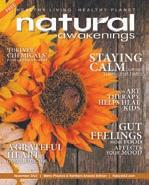

One of the first things we notice when we meet someone is their smile, so it is easy to understand why children with crowded teeth might be self-conscious when they encounter new people. But the condition is not just a cosmetic concern. “Teeth crowding are surface markers of structural chaos below,” says Felix Liao, DDS, author of Your Child’s Best Face: How to Nurture Top Health & Natural Glow. Dental crowding results from a deficiency in jaw growth, which can contribute to a partially stunted face, narrower airway, poor sleep and consequent learning and behavior problems.

According to a recent medical research review, its prevalence among children and adolescents is up to 84 percent. Fortunately, parents can take steps to nurture healthy dental/ facial development in their children so that there is enough room for all 32 teeth to line up straight and for the tongue to operate between the two jaws without occupying the airway.
Crowded teeth are the tip of an iceberg called Impaired Mouth Syndrome (IMS), a term coined by Liao in 2017 for a wide-ranging set of medical, dental and mood problems in children, from sleep and growth disturbance to respiratory infections and poor focus. According to a 2013 study by the Stanford Sleep Center, “Pediatric obstructive sleep apnea in non-obese children is a disorder of oral facial growth.”
IMS is an all-too-common condition that often goes undiagnosed, untreated or incorrectly treated. The result is a child that falls short of their full genetic potential and an adult that suffers recurring pain and fatigue. An underdeveloped maxilla—the upper jaw that also
forms part of the nose and eye socket—can lead to a litany of symptoms, including teeth grinding, a weak chin and jaw pain, and may also impact the appearance of the face, causing imbalanced features. By contrast, a welldeveloped facial structure will support better breathing, sleep and postural alignment, and benefit from high cheekbones and full lips.
“Rarely does managing symptoms result in a healthy child,” says Ben Miraglia, DDS, a board member of the American Academy of Physiological Medicine & Dentistry.
IMS symptoms improve when the jaws are activated to grow to their full potential. This is now possible with a partnership between parents and a new breed of dentists known as Airway-centered Mouth Doctors (AMD) that receive specialized training on the syndrome and its treatment.
These specialists work in the realm of whole health, looking at the interconnectedness of the body rather than individual body parts in isolation. They collaborate with other doctors and therapists, including myofunctional therapists that devise exercises for the mouth muscles and encourage nasal breathing. AMDs also work with dietitians to devise a bone-building diet free of the toxins, pollutants and chemicals found in processed foods that can impair normal facial development.
AMDs approach the condition without drugs or surgery, often without having to use braces which can result in a deflated mid-face. By designing retainer-like oral appliances to be placed over the teeth, they spur the growth and alignment of the jaws to help widen the airway and support sleep.
Mouth structure and jaw alignment are foundational to whole-body health in children, and Liao’s vision for achieving thriving health in kids includes these recommended steps:
n Early recognition by parents of IMS red flags in their child, including chapped lips, a weak chin, crooked teeth, dental cavities, disrupted sleep, slumped posture, fatigue, lethargy, hyperactivity and learning or behavior problems
n Diagnosis of an impaired mouth by a trained AMD
n Complying with AMD guidance, including the use of a professional oral expander appliance
n Eating a non-inflammatory, bonebuilding diet
n Following whole health team protocols to align the head, jaws and spine, and integrate mind, body and mouth
Growing the jaws is the groundbreaking solution to crowded teeth in children that parents have been hoping for. A plant will blossom more fully in sunshine than in shadow. The same can be said when it comes to a child’s smile and overall health.
Brooke Goode is the National Editor for KnoWEwell, the Regenerative Whole Health hub.
Ushering in a brand-new year can be filled with hope, but it can also feel as daunting as a blank sheet of paper. We might pause at the threshold with pen in hand, recounting past mistakes and failures, hesitant to make our mark. The unforeseen is like a stranger, easy to mistrust. Dreading the unknown can be a self-sabotaging habit that obstructs the view and keeps us wishing instead of living.
Nature’s great gift is her constancy of seasons, but she thrives on change. Despite the human propensity for clutching what is familiar and predictable, we do best by leaving the door ajar for the unexpected. If we are fortunate, we will have 12 more months to have another go at it.
Setting a place at the table for delight shifts our frequency from resistance to receiving our highest good, and swapping anxiety for excitement can be a spiritual practice during our most uncomfortable moments. Instead of making a resolution, what if we made the simple decision to not believe our fears?
With no concept of limitation or worry of scraped knees, we once learned to walk, happily undiscouraged when we stumbled. That first spark of eager curiosity
remains deep in our memory, not confined to youth. Embracing possibility this year can be a subtle, mantra-in-motion as we go through our days, a cellular willingness to expect an outcome tailored specifically for us. Here are some prompts for embracing possibility:
n On scraps of paper, write down 12 things you have postponed doing or trying and keep them in a special canister. Pull one out each month and follow through with joyful anticipation.
n Witness the sunrise once a week and designate it as an opportunity to open your heart and mind to the new and glorious.

n Change things up in the kitchen: Buy new dishes and donate the old to a local thrift store. Try a new food every week and explore herbs and spices not usually in the cupboard.
n Notice something in your daily surroundings that might have gone unnoticed before.
Marlaina Donato is an author, painter and composer. Connect at WildflowerLady.com.
Most clothes made today contain plastic. The non-biodegradable polymer is a major component of elastic waistbands and nylon sneakers. But by far, the largest fossil-fuel culprit is polyester, commonly used in shirts, pants, hoodies, dresses, jackets, underwear, socks, blankets and hats, according to Sewport, an online marketplace serving the garment industry.
In 2021, polyester comprised 54 percent of all new fabrics, according to Textile Exchange, a global nonprofit of fashion insiders promoting sustainability. Because it is inexpensive to make, this synthetic fiber is the darling of fast fashion which entices consumers to wear cheap garments a few times, throw them away and promptly buy replacements. Every year, an estimated 92 million tons of clothing end up in landfills worldwide; and in America, 85 percent of all textiles get discarded, according to Earth.org.
Plastic produces greenhouse gases at every stage of its long life—from extraction, refining and manufacturing to transportation and waste management. Researchers have found that washing polyester releases tiny synthetic microfibers into the water supply, harming marine life and contaminating human drinking water. It also breaks down into micro-plastics while languishing in landfills for hundreds of years.
The manufacture of polyester has social costs, too. According to Sewport, the vast majority of producers worldwide exploit uneducated people in impoverished countries, where workers are regularly exposed to highly toxic chemicals.
Made from mushroom mycelium, this textile is a sustainable alternative to animal leather.
Among conscientious environmentalists, there’s an aspirational trend toward textiles made of recycled plastic, such as Econyl. Patagonia promotes NetPlus material made from discarded fishing nets. Repreve

transforms reclaimed water bottles into yarn that is used to make various garments. Currently, these eco-friendly textiles make up a tiny fraction of the global market; only 14 percent of all polyester was recycled in 2020.
Textile Exchange and the United Nations Framework Convention on Climate Change’s Fashion Industry Charter for Climate Action have launched an initiative to shift the market toward recycled polyester. But even recycled plastic garments shed micro-plastics when washed. Consider using a washing bag like Guppyfriend, which keeps micro-plastics from escaping, or choose items that aren’t washed as often, such as sneakers.
“Organic and more sustainable counterparts from almost all types of natural fibers, including cotton, linen, down and wool, are becoming available at retailers across the globe,” says La Rhea Pepper, managing director of the Textile Exchange. Here are notable fabric options that are kinder to the planet.
LYOCELL: Trademarked as Tencel, lyocell is made from sustainably sourced wood cellulose and used in denim, dress shirts and underwear. Less water and
lower-impact chemicals are used in manufacturing this material. It’s biodegradable and easily recycled.

ORGANIC OR RECYCLED COTTON: While conventional cotton is a natural fiber harvested from plants, it consumes an inordinate amount of water and involves the use of toxic chemicals. The better choices are organic cotton certified by the Global Organic Textiles Standards (GOTS), which requires less water and doesn’t use chemicals, or recycled cotton, which repurposes already existing fibers.

PLANT-BASED LEATHER: Companies making these animal-free alternatives using mushrooms, pineapples, bananas, apples, cacti and other vegetables are highly innovative and represent an exciting, emerging sector.
PEACE OR AHIMSA SILK: Silk is biodegradable and requires much less water and chemicals than cotton, but it’s traditionally made by boiling or gassing silkworms. The cruelty-free approach behind peace or Ahimsa silk is that moths are allowed to emerge naturally before their cocoons are harvested. Look for GOTS-certified silk to ensure humane manufacturing.
WOOL: Made from the fleece of sheep and other animals, wool is naturally
biodegradable, regrows continually and can be harvested without harming animals. Still, industry players have been known to abuse animals, land and workers. Certifiers like the Responsible Wool Standard encourage better stewardship.
ORGANIC LINEN: Made from flax, linen requires little water, is biodegradable, mothresistant and considered more eco-friendly than cotton.
ORGANIC HEMP: Humans have been harvesting hemp for thousands of years. It’s considered one of the most sustainable fibers because it requires very little water and no toxic chemicals to produce.
As the annual global textile market nears $1 trillion in value, the environmental stakes are enormous, and sustainable choices aren’t always easy to make. Ultimately, it’s the new clothes we don’t buy that will help our planet the most. Vow not to purchase fast fashion. Invest in well-made, longer-lasting clothing. Mend clothes to extend their lives. Shop at secondhand stores. Wash clothing less often to reduce the release of micro-plastics. Choose brands committed to responsible fabrics and transparent labeling.
Sandra Yeyati, J.D., is a professional writer and editor. Reach her at SandraYeyati@gmail.com.


Among the many reasons to switch from ultra-processed diets to fresh food for our furry family members, unwanted toxins are high on the list. Because pet food manufacturers are not required to conduct quality control testing, consumers never know exactly what toxins their dogs and cats are inadvertently ingesting. According to PetFoodIndustry.com, “Some level of contamination is unavoidable.” Here is a look at the most common toxins found in many popular pet foods.
ARSENIC is used in herbicides, insecticides, wood preservatives and insulation, as well as in chicken feed in factory farms. According to Greg Aldrich, Ph.D., associate professor and pet food program coordinator at Kansas State University, “The measured presence of arsenic in pet foods does not equate to toxicity for this naturally occurring earth element.” While this may be true, bioaccumulation can do significant damage over time if sublethal doses are consistently consumed. The gastrointestinal tract, liver, kidneys, lungs, blood vessels and skin are
most vulnerable to arsenic damage, which interferes with hormones and causes cancer and death. To help pets with elevated arsenic levels, try iodine- and selenium-rich foods, including sea vegetables and Brazil nuts; sulfurous foods like garlic; alpha lipoid acid; and N-acetylcysteine.
MERCURY is released into the air and waterways primarily through burning coal, and seafood is the most common route of exposure. It is best not to feed pets an exclusive diet of fish protein. On the other hand,
seafood contains omega-3 fatty acids, which are essential to a pet’s well-being. Consider feeding them low-mercury options like wild-caught salmon, sardines packed in water, mussels or rainbow trout in rotation with other proteins, or supplementing their diet with krill oil or an omega-3 fatty acid that is third-party validated as contaminantfree and sustainably sourced. Mercury detoxification can be achieved by using chlorella and cilantro.
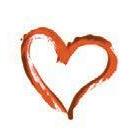
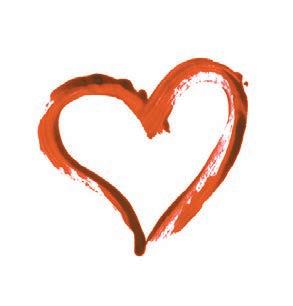
POLYCHLORINATED
foods, including culinary and medicinal mushrooms.


(PCB) and POLYBROMINATED DIPHENYL ETHER (PBDE) are used as fire retardants and can bioaccumulate at high levels in large, predatory fish at the top of the food chain like tuna, tilefish, king mackerel, shark and swordfish. Research suggests that cats are especially sensitive to PBDEs and PCBs found at high levels in both canned and dry pet foods. Although PCBs were banned in the U.S. in 1979, they are still used elsewhere in the world and continue to pollute the oceans. These fatsoluble toxins can be cleared through the bowels, so add fibrous veggies and chlorophyll-containing foods or supplements to the pet bowl.
BISPHENOL A (BPA) is used in plastics and coatings inside pet food cans. It imitates the body’s hormones, especially estrogen, in ways that are damaging to the health of both humans and animals. A 2017 study conducted by researchers at the University of Missouri concluded that even a short-term (two-week) feeding of canned dog food resulted in a three-fold increase of BPA in dogs. Avoid canned pet foods and #7 plastic food and water bowls and storage bins. Provide ongoing BPA detoxification support by offering foods rich in Lactobacillus acidophilus (kefir and yogurt) and glutathione-rich
DIOXINS, a byproduct of industrial processes, can disrupt the signaling of both male and female sex hormones in the body. They’re found in much of the U.S. food supply, including factory-produced meat, fish, milk, eggs and butter. Offer pets organic food whenever possible. Because dioxins are fat-soluble, they are stored in adipose tissues. Try the Ayurvedic practice of lipophilic-mediated detoxification, which uses healthy fats, including ghee, coconut and MCT oil, to pull out fat-stored toxins.
AFLATOXIN contamination has been the cause of several pet food recalls and major disease outbreaks for more than 20 years. Known to cause acute toxic illness and cancer, they are naturally occurring mycotoxins produced by fungi in agricultural crops. Corn, peanuts and cottonseed have the highest rate of aflatoxin contamination. Aflatoxicosis is more common in dogs than cats because commercial dog food more often contains corn. Many animal studies demonstrate the efficacy of using ginger, thyme, broccoli, turmeric and carrots for aflatoxin detoxification.
The only way to know exactly what a pet is eating is to buy the ingredients and prepare nutritionally complete meals at home. When choosing a commercial pet food, make sure that it contains human-grade ingredients and that manufacturers employ quality control steps in their operations to test for contaminants.
Veterinarian Karen Becker, DVM, has spent her career empowering animal guardians in making knowledgeable decisions to extend the life and well-being of their animals. For more information, visit DrKarenBecker.com

Connecting you to the leaders in natural health care and green living in our community. To find out how you can be included in the Business Directory, email PhoenixAds@NaturalAZ.com or visit NaturalAZ.com and download our media kit.
ALLERGY CLEARING TECHNIQUE 480-676-0510
Info@AllergyClearingTechnique.com AllergyClearingTechnique.com
Learn a process to potentially clear food allergy response. Home study course with training manual and training videos. Not NAET. No shots, No drops, No bloodwork—No kidding. See ad, page 11.
Pavel Gershkovich, CHP, CRP, PMP, Therapist 8765 E Bell Rd, Ste 110, Scottsdale 480-621-6041 • ArizonaLeechTherapy.com ArizonaLeechTherapy@gmail.com




Pavel Gershkovich, owner of Arizona Leech Therapy, is a professional medicinal leech therapist. He is here to help you find a natural, drug-free solution for your medical conditions, such as cardiovascular, high blood pressure, migraine, urology/ prostate, varicose veins, and deep venous thrombosis. See ad, page 23.
NATURAL MEDICINE & DETOX
2701 N 7th St, Phoenix 602-307-0888
NaturalMedicineDetox.com
We offer professional medical assistance with one of our Doctors of Acupuncture & Oriental Medicine, MD(H), or Classical Homeopaths. We also have several self-elect options for our many detox services. Please call to schedule a free 15-minute consult to learn what service might be the best option. See ad, page 33.
MacKenzie Kalt, Owner/Director 4050 E Greenway Rd, Ste 5, Phoenix 480-594-5052 • NatPainTreat.com


Providing some of the most advanced natural technologies for those struggling with chronic pain, injuries, stress, migraine headaches, PTSD, insomnia, Lyme disease, autoimmune disorders, skin conditions, and much more. Visit our website to learn more. See ad, inside front cover and page 27.
PIHMA COLLEGE & CLINIC Acupuncture, Herbal Medicine and Homeopathic Clinic 301 E Bethany Home Rd, Ste A-100, Phoenix 602-274-1885 • pihma.edu

PIHMA offers Acupuncture Treatments, Herbal Consultations, Acute and Constitutional Homeopathic Consultations, as well as Auricular Acupuncture, Cupping, Moxibustion, Gua Sha and Tui Na. Our medicines have been used for thousands of years to treat numerous conditions, including pain, stress and more. PIHMA is a teaching clinic and offers affordable pricing.
SW HERB SHOP & GATHERING PLACE
148 N Center St, Mesa 480-694-9931 • SWHerb.com Store.SWHerb.com
Kathy Gould and Madalyn Johnson, herbalists and proprietors, offer medicinal bulk herbs and specialty tea blends, herbal extracts, certification classes, community and therapist rental space, medicine-making supplies, and more. See ad, page 11.

WATERCOLOR ART CLASSES
Allura Westly 3611 E Sunnyside Dr, Phoenix AlluraWatercolor@cox.net 602-469-0524 • AlluraWaterColor.com
Allura Westly, master teacher, opens her sanctuary studio to all levels, beginner to advanced. Learn fluid color technique, drawing and composition. Small class of eight students. No talent required, just a desire to create.
BENNETT’S CARPET & UPHOLSTERY CLEANING

Valleywide Service • 480-994-4988 BennettsCarpetCleaningAZ.com
Eco-friendlycarpet and upholstery cleaning. Featuring organic cleaners and

odor removal products derived from renewable seed and vegetable sources. No perfumes, solvents or other hazardous products. No phosphates. Products also available for in-home use. Licensed and owner operated since 1974. See ad, page 14.
MILLENNIUM DENTAL ASSOCIATES
5705 N Scottsdale Rd, Ste D-110, Scottsdale 480-948-0560 MillDental.com

Millennium Dental offers more than 50 years’ experience in holistic dentistry, including advanced general dentistry Certified by the IABDM. See ad, page 9.
Dr. Michael Margolis and Dr. Stephen Kovar 2045 S Vineyard Rd, Ste 153, Mesa 480-833-2232 • MyDentistAZ.com


A holistic and biological approach to your dental needs and overall health. Bio-compatible dentistry, esthetic dentistry lumineers/veneers, family dentistry and much more. See ad, page 3.
NATURAL DENTAL PARTNERS
3134 W Carefree Hwy, Ste 9, Phoenix 602-775-5120 • MyNaturalDentist.com
The doctors at Natural Dental Partners take the time to listen to your concerns and use their extensive experience to help you achieve better health. Using the latest technology (such as lowdose 3D imaging, CEREC, lasers, PRF, ozone and treatment of sleep disorders), they believe in a team approach to help you achieve your healthcare goals. Check out MyNaturalDentist. com or ABreathOfHealth.com to see how they can help you. See ad, pages 5 and 15.
Melanie Icard, NMD
1430 E Missouri Ave, Ste B127, Phoenix 480-599-8370 • ButterflyHolistic.com

Dr. Icard specializes in biological medicine, peptides, PRP, aesthetics and ozone therapy. Her offerings include holistic antiaging medicine, pain reversal, natural and traditional aesthetics, ozone therapy, holistic ketamine therapy, and sexual health regeneration. See ad, pages 17 and 21.

KIM CARTER, MA, HTCP
15215 S 48th St, Ste 154, Phoenix Kim@IntuitiveKim.com IntuitiveKim.com
Kim is an Intuitive and Healing Touch Certified Practitioner offering guidance when you feel out of alignment with your authentic self. Stress, fear, anxiety and grief/loss throw us off balance, making it challenging to access inner wisdom. Sessions include reading and clearing your energy field; and simple, practical self-healing tools to keep you balanced and grounded. See ad, page 21.
FENG SHUI 81
Lori Thomas Feng Shui Instructor/Practitioner 480-370-3310 • FengShui81.com
Feng shui is a study of how energy flows in one’s home. Lori Thomas offers private consultation and classes to teach how to correct energy imbalances to prevent mishaps in one’s life, improving health, abundance, relationships and more. She is an Intuitive with extensive training in feng shui and healing arts. See ad, page 14.
ARIZONA ORGANIC PEST & TERMITE CONTROL

Organic Pest Control 602-923-1457 • ArizonaOrganic.com
Avoid being exposed to dangerous chemicals when all-natural and safer alternatives work just as well and last longer. See ad, page 33.
ANDREA BRIGGS, AKA “CRITTER DOC”
ASAM, Sh. Reiki, HTAP Animal Communicator and Counselor 602-317-1543 • CritterDoc1@cox.net SpiritAnimalWisdom.com
With a gentle healing touch, Andrea provides earth medicine and energy healing, animal communication, and intuitive counsel for pets and their people.
SOUTHWEST INSTITUTE OF HEALING ARTS

1538 E Southern Ave, Tempe 480-994-9244 Info@swiha.edu • swiha.edu

Nationally accredited college offers holistic health and wellness degrees, diplomas, certificates of excellence, continuing education and personal development, oncampus and online. Financial aid available. See ad, outside back cover.

11108 N Frank Lloyd Wright Blvd, Ste E16, Scottsdale 732-832-1036
DimensionsOfHeavenAndEarth.com
Dimensions of Heaven and Earth is Scottsdale’s exciting, new one-stop Spiritual Experience: a center of healing and insight combined with a store full of unique gifts from local artisans. With training and tools for your personal development, we are excited to help you take your spiritual journey to new levels! See ad, page 12.

The Path of Spiritual Freedom 1-877-300-4949 • EckankarArizona.org Eckankar.org • HearHU.org Facebook.com/EckankarArizona
Eckankar is an active, individual, creative spiritual practice. A companion and roadmap for your journey home—to the heights of SelfDiscovery and God-Discovery, and beyond. Come along and discover the most secret part of yourself. The key to spiritual freedom lies within you. Explore life as a Soul Adventure. See ad, page 23.
THE SUMMIT LIGHTHOUSE® OF PHOENIX

4105 N 20th St, Ste 115, Phoenix 480-442-5020
SummitLighthousePhoenix@gmail.com
SummitLighthousePhoenix.org
Dedicated to sharing Saint Germain’s Violet Flame. All faiths welcome. Learn how you can become a modern day mystic. We are dedicated to sharing the Teachings of the Ascended Masters® to help you bring in joy and peace to the world. Learn what the requirements are to make your ascension. See ad, page 26.
Experience Yi Ren Qigong
January 6 through March 31
Weekly on Fridays, 3-4:30pm
Sessions led by Miriam Drake, M.Ed., Transformative Life Coach and Hypnotherapist. Bring yoga mat and water.



Cost: Love donation 218 West Goodwin St., Ste. 203, Prescott
RSVP and questions: mdraketherapy@gmail.com mdraketherapy.com
Find additional articles online at NaturalAZ.com. Go to the homepage and explore local businesses and articles exclusively from Natural Awakenings.

123rf.com/lola1960
NOTE: Please check market websites and ArizonaCommunityFarmersMarkets.com for more information on days and hours, and any restrictions.

Ahwatukee Farmers Market
4700 E Warner Rd, Phoenix
Sundays Oct-May 9am-1pm Jun-Sep 8am-11am Facebook.com/AhwatukeeFarmersMarket
Care 1st Farmers Market
328 W Western Ave, Avondale
Tuesdays Jul-Oct 8am-noon
ArizonaCommunityFarmersMarkets.com
Carefree Farmers Market
1 Sundial Circle
Fridays Oct-May 9am-1pm Jun-Sep 8am-11am
Facebook.com/CarefreeFarmersMarket
Downtown Chandler Farmers Market
3 S Arizona Ave
Saturdays Oct-May 9am-1pm Jun-Sep 7am-10:30am Facebook.com/ChandlerFarmersMarket
Downtown Mesa Farmers Market
1 E Main St
Saturdays 8am-noon dtMesaFarmersMarket.com
Downtown Phoenix Farmers Market
721 N Central Ave
Saturdays Oct-Apr 8am-1pm May-Sep 7am-11am
DowntownPhoenixFarmersMarket.org
Gilbert Farmers Market 222 N Ash St Saturdays Oct-Mar/Apr 8am-noon Apr/May-Sep 7am-11am GilbertMarket.com




High Street Farmers Market 5415 E High St, Phoenix Sundays Oct-May 10am-1pm Facebook.com/Farmers-Market-on-HighStreet-2244771575799425
Mommas Organic Market
Arrowhead Farmers Market 7780 W Arrowhead Towne Center, Glendale Saturdays Oct-May 9am-1pm | Jun-Sep 8-11am Facebook.com/Getlocalazfarmersmarkets GetLocalArizonaEvents.com
Mommas Organic Market
Glendale Farmers Market at Cabela’s 9380 W Glendale Ave, Glendale, AZ 85305 Sundays Sep-May 10am-2pm | closed for summer Facebook.com/Getlocalazfarmersmarkets GetLocalArizonaEvents.com
Old Town Scottsdale Farmers Market
3806 N Brown Ave Saturdays 8am-1pm
ArizonaCommunityFarmersMarkets.com
Power Road Farmers Market 4011 S Power Rd, Mesa Monday-Saturday 9am-5pm | Sunday 9am-4pm PowerrdFarmersMarket.com
Roadrunner Park Farmers Market
3502 E Cactus Rd, Phoenix
Saturdays Oct-May 8am-1pm | Jun-Sep 7am-11am
Facebook.com/RoadrunnerParkFarmersMarket
Singh Meadows Farmers Market
1490 E Weber Dr
Fridays, Saturdays & Sundays 8am-2pm Facebook.com/SinghFarms
Sun City Farmers Market
16820 N 99th Ave
Thursdays Oct-May 9am-1pm Facebook.com/Sun-City-Farmers-Market631299790224049
The Capitol Farmers Market
1700 Adams St, Phoenix
Thursdays 10:30am-1:30pm
ArizonaCommunityFarmersMarkets.com
Uptown Farmers Market
5757 N Central Ave, Phoenix
Wednesdays Oct-Apr 9am-1pm & May-Jun 8am-noon
Saturdays Nov-Apr 9am-1pm & May-Oct 8am-noon UptownMarketAZ.com
Verrado Community Farmers Market

N Market Pl & W Main St, Buckeye Sundays Oct-Jun 9am-1pm Facebook.com/VerradoCommunityFarmersMarket
Flagstaff Community Farmers Market
211 W Aspen Ave, City Hall Parking Lot Sundays May-Oct 8am-noon FlagstaffMarket.com
Prescott Farmers Market
Dignity Health, YRMC
900 Iron Springs Rd, Miller Valley Lot Saturdays 7:30am-noon PrescottFarmersMarket.org
Sedona Summer Community Farmers Market
Tlaquepaque/Creekside, 336 Hwy 179 Fridays May-Oct 8-11:30am
Sedona-Farmers-Market.com
Sedona Winter Community Farmers Market
Wells Fargo Bank Parking Lot 2201 W State Rte 89A, West Sedona Sundays Oct-May noon-4pm
Sedona-Farmers-Market.com





